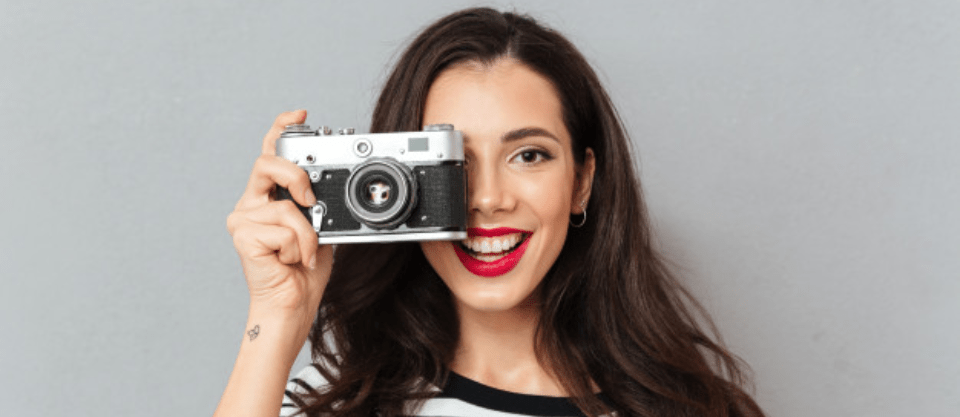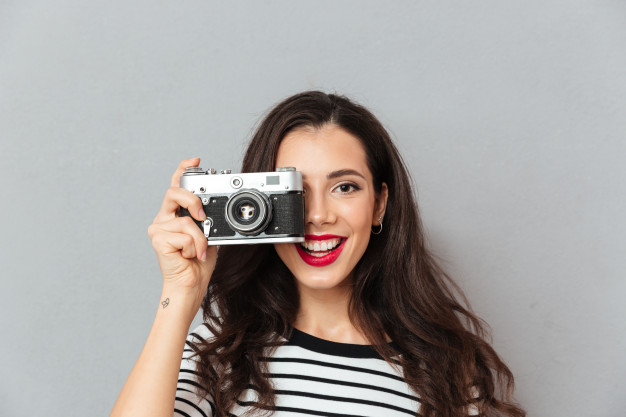
Portrait Photography Tips: How to Click a Good Portrait Photo?
Portrait photography, commonly known as portraiture, has brought about a complete change in the way traditional forms of photography are perceived. Photographers across the world aren’t constrained or inhibited by the methodical and structured nature of photography anymore. Instead, they have begun to employ portrait photography as a mode to explore the limitless potential of their myriad creative abilities. And it shows – the portrait photography industry has earned a revenue of about $10 billion in the year 2019 alone!
However, when it comes to clicking good portrait photos, most photographers today lack adequate knowledge about technicality and detail. They either tend to overexpose the subject, distort the composition, or fail to capture their expressions. As a result, an important opportunity to click an engaging portrait photograph is callously squandered away.
Therefore, if you are a prospective photographer who is willing to venture into the arena of portrait photography, it would be wise to first understand this photography genre‘s core essentials. In this regard, here are a few tips and tricks to help you improve your portrait photography skills.

1. Balance the Exposure
Portrait photography has an uncanny way of fiddling with a camera’s exposure controls. For example, if the skin tone of your subject is light, your camera would be instantly tricked into underexposing the picture. On the other hand, if the skin tone of your subject is dark, your camera would respond by overexposing the shot. You must review each image before you capture it so that its exposure can be balanced as per the shot’s requirement.
2. Widen the Aperture
One of the best ways to achieve a good portrait photo is by making sure that the aperture of your camera is adequately widened. This is because a wide aperture can easily help your portrait photograph develop a uniform depth effect. Cameras with an aperture range that varies between f/2.8 to f/5.6 can nicely blur out the background so that the foreground, i.e. the subject in your picture can stand out.
3. Increase the Shutter Speed
While shooting in portrait photography mode, subjects tend to move around a lot. This doesn’t just ruin the general photo composition but also causes the picture to motion blur. More so, it spoils any chances of practicing expressions photography, where a wide variety of facial aspects can be captured. To avoid this problem, you can simply increase your shutter speed. Keep it preferably at 1/250 sec for realistic and striking shots.
4. Compose With Creativity
A well-composed picture forms the very basis of good portrait photography. Not only does it give the photograph a great amount of depth, but it also makes sure that the subject is positioned in an engaging and aesthetic way. So instead of capturing the generic top-half headshot of your subject, try placing them towards the left/right corners. Experimental shots like these will help you unleash the full power of your creative spirit.
5. Use Focus Wisely
There is nothing more sinister in portrait photography than an out of focus, blurred picture! Therefore, as a photographer, you must make sure that the photo you click lays equal focus on all aspects of a person’s face and features. Use wide apertures and pinpoint your focus device on the subject’s head. If that seems improbable, just press the auto-focus button manually. This will enable you to shoot an in-focus, sharp picture with astounding and clear results.

6. Account for the Weather
In outdoor portrait photography, the weather can sometimes play spoilsport. Bright sun can shine an excessive amount of light, whereas dark clouds can potentially limit your access to natural devices. In such a situation, it would be wise to use ‘fill flash’ or ‘flash guns’. These options would enable your camera to get better exposure while empowering you to capture a good image.
7. Buy a Reflector
To produce a good portrait photograph, you don’t just need to focus on depth effect, cameras or lenses. Rather, you also need to ascertain that your subjects are brightly lit. This precisely is where photography reflectors can offer great assistance. With their ability to bounce light in different directions, reflectors help smoothen the picture’s texture, diffuse any direct light, fill in all unwanted shadows and therefore, create a sharp, consistent and stunning image.
8. Vary Your Angles
While most portrait photos are clicked with a direct headshot, a variation in angles can sometimes lend great perspective to your portrait photography abilities. Rather than going for the usual vertical angles, try shooting with a wide-angle instead. Better still, simply tilt your camera to capture a different picture. Doing so won’t just help you experiment with various portrait photography techniques, but it will also enable you to compose your frame better.
9. Choose a Good Lens
Your portrait photography can only prove to be the best photography if it is undertaken with a carefully chosen lens. In this regard, you can either opt for a medium telephoto (85 mm – 105 mm) or a normal telephoto (70 mm – 200 mm) lens. Both these types allow you to zoom in to your subject and focus on them as the sole point of attraction. With the focus remaining intact, the distractions of foreground and background are reduced, thereby making your shot quite candid.
10. Build a Rapport
Before you start clicking pictures, make sure that you talk to your subject in detail. This is because portrait photography is all about the comfort and confidence of your subject. So, speak to them about what they expect from the photograph and offer them valid suggestions. Show them each shot that you click and review the technique and composition together. If required, make changes in consonance with their opinions or requirements.

The Way Forward
As times change, portrait photography would acquire a separate class of its own. Not only would it inspire the imagination of millions of photography enthusiasts, but it would also help them capture images in a variety of meaningful ways. Consequently, subsets of the portrait culture like expressions photography, glamour photography and corporate portraiture would emerge, thereby, lending this unique field a distinctive charm.
In such a time, if you dream of learning the best photography techniques, you will need to find a place which can lend you detailed knowledge, practical insights and international exposure in the same groove. When it comes to portrait photography, all of these requirements can be succinctly fulfilled at the highly renowned Upskillist.
Registering for an online photography course from this academy doesn’t just teach you the art of capturing the perfect visuals, but it also helps you understand the very fundamentals and intricacies of portrait photography.
Looking to sharpen your photography skills? Join our top-rated professional best online photography classes today!



